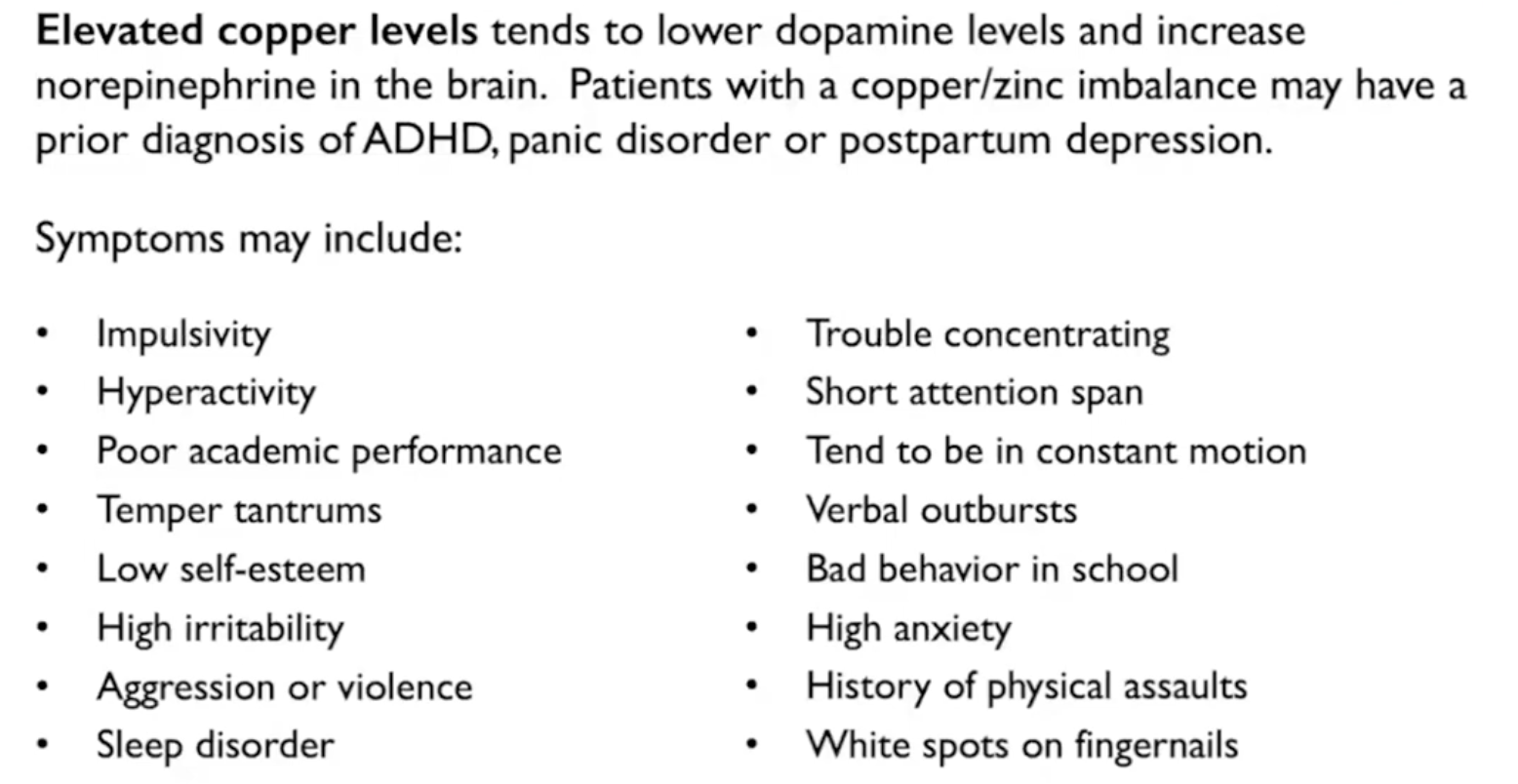Healing the Depression-Anxiety Duo With Molecular Testing & Nutrients
Hello, I am Julie Donaldson and I am a clinical nutritionist with functional medicine training. I specialize in restoring balance in complex, chronic and acute health conditions. I welcome you to peruse other articles that may be of interest to you in your health investigation!
“If I hadn’t met Julie Donaldson, I might not have “made it”. I do give myself credit for digging - way past the usual information we usually get about depression and anxiety on the internet. Dig long and hard enough and you’ll find a gem like Julie. I have pyroluria and I am an undermethylator. I suffered for decades of my life until she did the right testing and delivered the right therapies. I am eternally grateful.”
It is important to understand the deep relationship that exists between mental illness and nutrient imbalances. Additionally, our recognition of the profound impact of epigenetic stresses in the depletion of key nutrients is now scientifically solid. Rates of mental illness (especially in women and those 25-34 years old) are ever-increasing. Approximately 1 in 5 Americans lives with a mental health disorder. Over 7 million Americans suffer from depression and anxiety disorders while nearly 8 million Americans suffer from PTSD (Post Traumatic Stress Disorder). (The duo of depression and anxiety often occur together as they have modulating effects on one another.) Here, we will cover how depression and anxiety disorders are connected to molecular nutrient deficiencies (and sometimes excesses). The expanding field of molecular medicine has taught us over the past decades that true healing opportunities lie with the proper testing for root cause deficiencies followed by proper application of nutrient therapies.
Male & female mental illness by age group
The epigenetics of mental health disorders
Dr. William Walsh is a leading expert and pioneer in this field. He states the following:
“It’s becoming increasingly clear that many mental disorders are epigenetic in nature… In most cases, an epigenetic disorder appears quite suddenly after a lifetime of relative wellness. Since these disorders involve deviant marks that survive cell divisions, the condition doesn’t “go away” and can persist for the remainder of life.
It appears these conditions usually are caused by sudden or cumulative environmental insults in persons with a tendency for high oxidative stress. The environmental triggers may involve physical injury, illness, toxic metals, powerful medications, or emotional trauma…
…science has made great advances in the understanding of complex brain processes, and we are approaching an era in which psychiatric medications may no longer be necessary. An under-appreciated fact is that the primary raw materials for the synthesis of many neurotransmitters are nutrients - amino acids, vitamins, minerals, and other natural biochemicals that we obtain from food.”
Dr. Walsh explains that severe oxidative stress, along with heavy metal toxicity, methylation imbalances and pyrrole disorder are major contributors to anxiety and depression.
William Walsh depression biotypes
22% of the general population have hypo or under-methylation, while 8% have hyper or over-methylation. 70% of people with mental health issues have a methylation disorder.
What, exactly, is methylation? It is the contribution of a methyl group to a protein which allows the correction of DNA “mistakes” and aberrations. This, in turn, activates appropriate cleansing and detoxifying processes. Methyl molecules activate and inactivate enzymes that regulate hormones and neurotransmitters. MTHFR is an example of such an enzyme, and this brings us to the topic of methylation and “SNPs” (single nucleotide polymorphisms, also known as gene mutations). The identification of the human genome has led many to believe that their genetic map is what holds the key to health & longevity - if they could only influence those “bad” genes, all would be well. But the truth is this - almost no SNPs have any effect at all on a person’s health. The larger the molecule involved in a genetic scenario, the less significant the SNP is - and the MTHFR enzyme is a very large molecule.
So, why all the hype about MTHFR? (including all the improper “treatment” of it) The answer lies in its impact upon so many functions in the body, including DNA repair, detoxification and neurotransmission. The belief has been that by administering folate (the main focal compound in the MTHFR pathway), the mutation could be “cured”. Unfortunately, this approach often causes more trouble, as only over-methylators respond to this approach and they are in the minority. More importantly, “treating” in response to a SNP does not tell us anything whatsoever about biochemical/molecular expression.
Let’s take a look at some of the symptoms and characteristics of under and over-methylation. We begin below with undermethatxlators.
Symptoms of undermethylation
Secondly, here are the major characteristics/symptoms of overmethylaltion:
Symptoms of overmethylation
As you can see, there are many traits and experiences that are associated with (and can complicate) mental health disorders. A rather unfortunate and common predicament is that the topic of methylation does not arise when speaking to a doctor or therapist about mental illness. In the functional health care environment (and for decades in my own practice), there is a focus on proper testing to identify nutrient deficiencies that accompany these methylation patterns. These are not found in a genetic report - but rather in the lab where we observe one’s biochemistry.
What are some of the important nutrients we are concerned with in methylation disorders? Zinc, copper, B vitamins, selenium, glutathione, vitamins C & E, chromium, methionine and niacin, just to name a few. In addition to assessing the status of these nutrients, we test for whole blood histamine, homocysteine and possibly SAM/SAH ratios. All of these nutrients have impacts upon brain function. (A brief note on nutrient excesses that can also do a good bit of damage: perhaps the most notable is excess copper and folate from diets that push extremes of vegetables, particularly green leafy vegetables. Copper is a nutrient, but it is toxic in excess. It pushes the conversion of dopamine to norepinephrine which can cause anxiety, fast heart rate and more. Undermethylators with anxiety or depression are vulnerable to folates. The folates switch on the serotonin reuptake gene that is already not downregulated because of the lack of methyl. For some people, they find that a sudden intake of folate causes a precipitous drop in mood or exacerbation of symptoms.)
Let’s cover the topic of pyroluria next. Everyone has and excretes pyrroles. The condition of pyroluria involves excessive urinary excretion of pyrroles. Pyrroles have both zinc and B6 molecules attached to them as they leave the body. This is one of the major concerns with the disorder, as it depletes these essential nutrients. They are critical for normal immune and brain function as well as DNA repair & replication.
Pyroluria is detected in a specific test called the Kryptopyrrole Urine test (KPU). When excesses of pyrroles are found in the body, we have an accompanying association of low B6 and zinc. Here is an excerpt from my in-depth article on pyroluria:
“Pyroluria is the disruption of synthesis of heme-producing molecules in the body, including hemoglobin. Pyrroles are a natural byproduct of the degradation of heme-containing molecules which accumulate in excess with the presence of this imbalance. Pyrrole disorder sufferers produce excessive amounts of the metabolite HPL (hydroxyhemopyrrolin-2-one). It was once thought that this renders normal cell receptors unable to properly utilize zinc, Vitamin B6 and biotin while at the same time enhancing their excretion in the urine when attached to the pyrroles (which have an affinity for these nutrients) But, new information and research suggests that pyrroles do not actually have the capacity to bind to these nutrients, but rather signal that the nutrients are being required and/or utilized in excess. In the new research, in fact, it is shown that elevated pyrroles are indeed found through proper urine testing (a fact that has been disputed over the last years), and those higher levels are associated with mental disorders over 70% of the time.”
The depletion and/or high demand for these key nutrients (which are coenzymatic cofactors for mood and methylation modulation as well as for amino acid and neuromediator metabolism) contributes to the expression of the symptoms already defined in pyroluria. But the new understanding from the research is that elevated pyrroles signal 2 things: 1) the molecular origin is disruption of regulatory heme and 2) there is oxidative stress. These two things are interrelated. Essentially, however, the research does prove that pyroluria is a legitimate condition.
Oxidative stress is defined as cellular/tissue damage caused by the body’s inability to keep up with free radical production. Here are the main sources of oxidative stress:
poor nutrition, especially the use of processed oils (contributing to poor gut function which is a powerful influence on the gut-brain axis, inclusive of inducing mood disorders)
low antioxidant intake (this also damages the skin, our #1 line of defense and the body’s largest organ)
psychological stress
environmental toxin accumulation, including polluted air, water, homes (mold), heavy metals and plastics
disruption of circadian rhythms
iron overload
physical inactivity
In addition to potentially causing anxiety and depression, pyroluria can also be a factor in OCD, ADHD, schizophrenia and suicidal tendencies. It is noted that there is a higher rate of pyroluria in people who have autism or autism spectrum disorders.
While mental illness is often associated with pyroluria, other non-mental/emotional symptoms include acne, nail spots, cold hands and feet, inability to tan, low morning appetite, constipation, joint pain, ADHD, dyslexia, food sensitivities/gut dysfunction, sensitivity to light, irritability and temper, prematurely gray hair, frequent infections, poor dream recall, poor short term memory and social withdrawal.
In essence, pyroluria is a stress disorder. Any mental, emotional, life or physical stress can trigger its expression. Likewise, reduction of these stresses can quiet its expression. While an individual is vulnerable to pyroluria, it does not exist in a state of constancy. Hence, it is important to retest and re-evaluate under stressful circumstances. Appropriate nutrient therapies should be applied in states of active expression.
As we enter the conversation of heavy metal toxicity, let’s bring forward the reality that B6 and zinc (depleted in pyroluria) are also absolutely necessary for detoxification of heavy metals.
Zinc is needed for all of the following:
proper immune system function
cell division and cell growth
wound healing
breakdown of carbohydrates
support for HCL (hydrochloric acid) production in the stomach
senses of taste and smell
during pregnancy, infancy and childhood for proper growth
enhancement of insulin action
B6 is needed for the following:
production of antibodies, which are needed to fight many viruses, infections, and other diseases
maintaining normal nerve function
supporting production of hemoglobin, which carries oxygen in the red blood cells to body tissues. A vitamin B6 deficiency can cause a form of anemia
breaking down of proteins
enhancement of insulin action
The possible overlapping of all of these epigenetic stresses can create both an overwhelming biochemical scenario for an affected person alongside an incredible healing opportunity when investigated, understood and addressed properly.
Any heavy metal in the body that fails to be methylated and effectively removed through the phases of detoxification can pose problems for both mental and physical health. Heavy metals disrupt the gut/microbiome (which in turn disrupts neurtransmission) and have been linked with diseases including diabetes, cardiovascular disease and MS. Displacement of key minerals such calcium and magnesium are also a factor - one which can add to the expression of thyroid disease.
We mentioned copper earlier in the article. Copper is both a metal and a nutrient. Interestingly, in a necessary & balanced molecular quantity, it functions like a nutrient. Even in nutrient form, however, when it is in excess, it functions much like a heavy metal, causing toxic responses and symptoms.
Symptoms of elevated copper
Other than the vegetables/green leafy foods mentioned above, copper is high in grains, nuts, shellfish and organ meats. Exposure can occur also through water, cookware, copper pipes and copper IUD's.
On the topic of mental and emotional stresses and influences
Of course any and all disorders or diseases can be influenced by life situations and mental/emotional stresses, especially those inherited in childhood. The mind/body connection is undeniable, and the biology/biography of patterns learned early in life are also undeniable. It is also not uncommon that we experience the loss of a “recovery” or Bell curve experience when under mental/emotional stresses, exactly as we can in physical stresses. When the mind & body “inflame” in response to a stressful situation, with good biochemistry and good life skills, we recover. Without those things, we can remain in a heightened state for a very prolonged period.
Something I will write about someday is generational pain. Many people know what traumatized them in childhood, but many do not. They have a vague sense of carrying a weight that isn’t theirs, sometimes along with understanding that other family members have done the same, inclusive of high empathy. But then sometimes the pendulum swings the other direction, towards complete rejection and blame of family members for stressful patterns. The truth often lies somewhere in the middle where generational patterns need to be highlighted with compassion, directness and conscious choices to help future generations release from them. Look forward to more on this topic later.
Summations and solutions
To sum up, anxiety and depression are often driven by failures in DNA repair and methylation responses. They are also fed by oxidative and toxic stresses. Deficits of key molecular nutrients and pyrrole disorder are little-known but very influential factors.
So, what are we to do?
#1 - Be aware and accept what is happening. Seek professional counseling if necessary.
#2 - Begin to investigate biochemistry. What, exactly, does this entail? - testing through an approved lab for Walsh & Mensah designated markers. These include (always) plasma zinc, serum copper, whole blood histamine, and vitamin D; (sometimes) homocysteine, ceruloplasmin, SAM/SAH ratio and thyroid. In some special cases (autism & high level athletes included) amino acids and stool testing.
#3 - Get stabilized and “fueled” with personalized nutrition. This is a must, as without it, the system will be pushed to heal without the ATP needed to respond to the messages. If this is the first time you’re hearing this, get ready to hear it a lot! Here at True Nature, this is foundational to all healing, no matter the causes or specifics of one’s illness. Your engines must be fueled in order to accept a healing stimulus.
#4 - Initiate personalized, appropriate nutrient therapies that are catered to your results. These often include (but may not be limited to) zinc and zinc ionophores, B vitamins, vitamin C, molybdenum, NAC, amino acids, omegas 3/6/9, antimicrobials, spore biotics, humic/fulvic acids and toxin binders. It takes an estimated 8-12 months to correct methylation disorders. Consistency and patience are paramount!
#5 - Find what works for you in daily practices and supports. More information is here, here, here, here and here.
I am a survivor of the anxiety/depression loop, generational trauma and very poor DNA methylation with associated oxidative stress and gut dysfunction. I work with these conditions every single day and invite you to learn more about how you too can heal from the multiple layers of these dysfunctions. Please contact me at Julie@truenaturehealthconsulting.com for more information. We provide holistic telehealth services.
Julie Donaldson, LMT, CMTA







